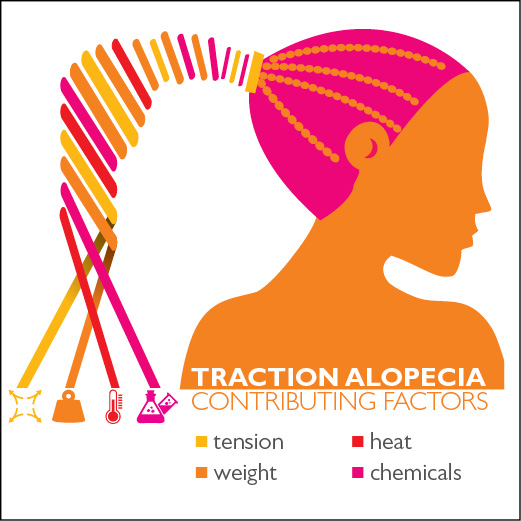Can How You Wear Your Hair Cause Hair Loss?
By:
No one wants to lose their hair and fortunately, for many women, balding is entirely preventable. While 95 percent of hair loss in men is caused by male pattern baldness, which is largely hereditary, women lose hair for a wider variety of reasons, such as stress, childbirth, or taking certain birth control pills. Other types of female balding may be easier to control than previously thought, at least according to a recent study by Johns Hopkins researchers.
The new report published in the Journal of the American Academy of Dermatology found that certain hairstyles increase a woman's risk of baldness and avoiding them can keep locks full and flowing.
"Hair is a cornerstone of self-esteem and identity for many people, but ironically, some hairstyles meant to improve our self-confidence actually lead to hair and scalp damage," said Crystal Aguh, study author and assistant professor of dermatology at the Johns Hopkins University School of Medicine.
What hairstyles are linked to baldness?
Not all hairstyles are created equal. According to researchers, styles that may lead to balding include braids, dreadlocks, weaves, tight ponytails, and extensions. They put more tension on the wearer's hair follicles, especially when the hair is tightly styled.
The exact mechanics of traction alopecia, which is what scientists call hair loss caused by tension to the hair root, is pretty simple. When hair is pulled back and stretched — like when a person styles their hair in a tight bun or braid — stress is carried down the hair shaft to the follicle. Put enough tension on the root for long enough and hair loss may start.
The risk of balding from traction alopecia can be enhanced by other styling decisions, too. Chemical straightening, coloring, frequent wig wearing, and other process that make your hair brittle can also put added strain on your hair and scalp, increasing the chances that a tight hairstyle will cause your hair to fall out according to the study.
So braids aren't okay?
It's not that simple, say researchers.
Tight hairstyles are usually fine, according to the study, but wearers need to be conscious of how frequently they wear their hair in these styles. Researchers advise that braids should be loosened every two to three months to give hair follicles a break, and styles that involve high levels of tension should be removed every six to eight weeks — like weaves and extensions. Black women were most likely to suffer from traction alopecia because such high-tension hairstyles are more commonly worn, with around one-third of Black women suffering some kind of hairstyle related hair loss.
 http://www.hopkinsmedicine.org/news/media/releases/all_hairstyles_are_not_created_equal
http://www.hopkinsmedicine.org/news/media/releases/all_hairstyles_are_not_created_equal
Even if traction alopecia sets in, all isn't lost. Not only is this kind of hair loss entirely preventable, since it's caused by hairstyling decisions, but it's also often reversible — if patients seek early treatment from medical professionals.
"We have to do better as care providers to offer our patients proper guidance to keep them healthy from head to toe," Aguh said about the findings. "[S]imply telling patients to abandon [certain hairstyles] won't work for everyone. Instead, physicians can educate themselves to speak with patients about making the best hairstyling choices to minimize preventable hair loss."
